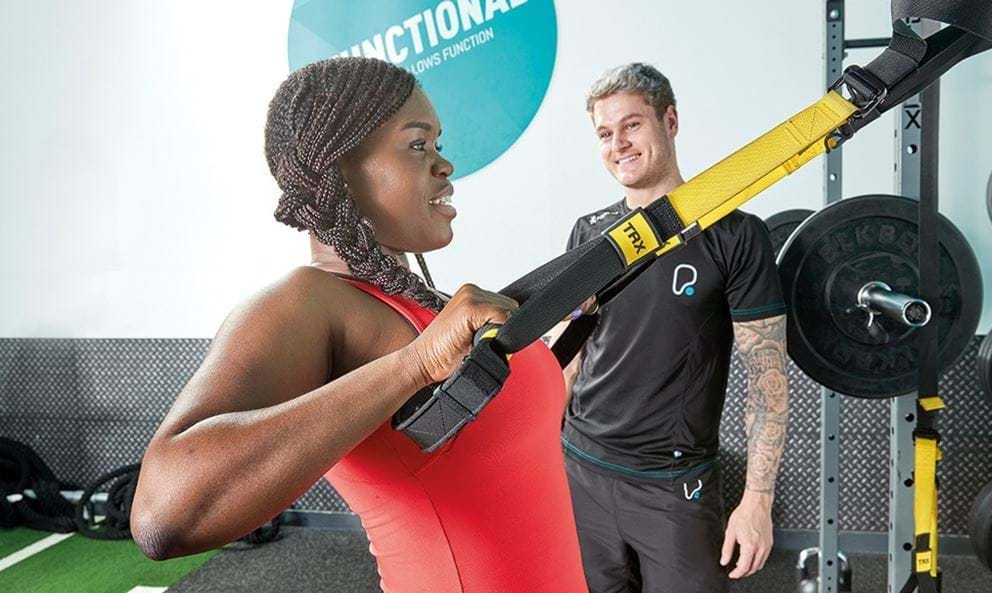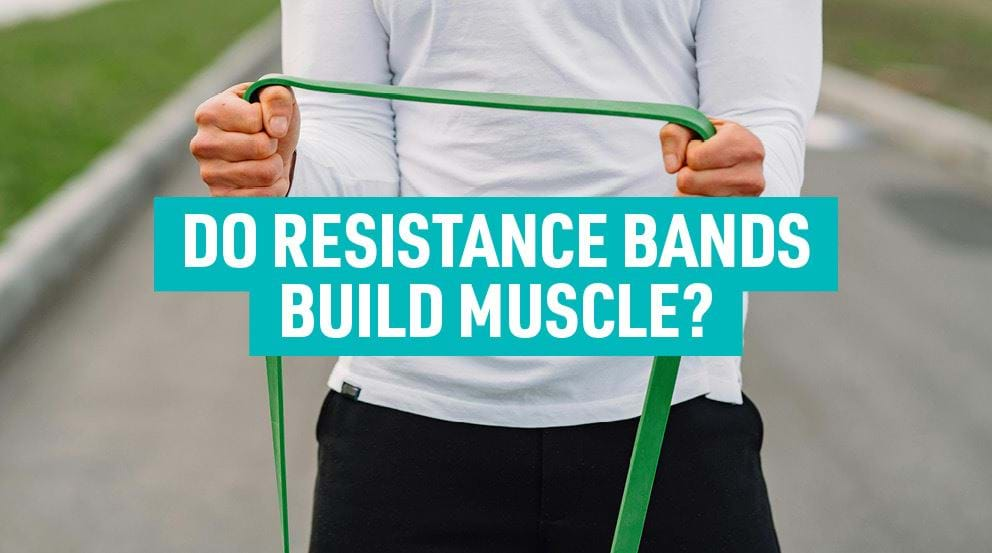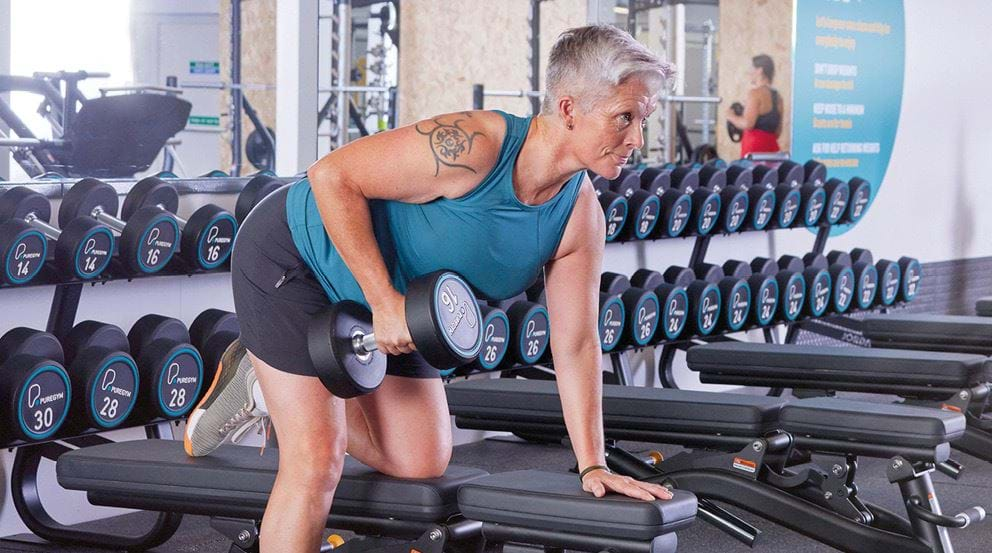Resistance Training: What is it and why should you do it?

What is resistance training?
The term resistance training refers to any kind of exercise where you work against some kind of force. This could be something as simple as your own body weight, through to resistance bands, free weights, dumbbells and machinery.
The main results of resistance training is improved strength, health, endurance and fitness. With all these benefits, it's an important type of training to include in your fitness programme.
What is the difference between resistance training and strength training?
Essentially, strength training is a type of resistance training, but with a focus on improving the strength of your muscles. Strength training typically focuses on low reps with high weights, while resistance training typically involves a higher rep range with lighter reps, such as the exercises you may find doing in fitness classes. Resistance training helps to build strength, but it isn't necessarily the main objective. Our guide to strength training gives you more info.
Examples of resistance training:
Here are some examples of resistance workouts you might want to try:
- TRX Training: this piece of kit is a great way to improve general fitness using the straps and pulleys as resistance. Try starting with TRX rows. Hold the TRX straps, stand in a vertical plank position and walk your feet forward until the straps go tense. With your palms facing each other, pull your body towards your hands whilst keeping your elbows close to your body. Keep your abs tight throughout. Gently lower yourself to the starting position and repeat. If you want to make the move more challenging, move your feet forward so you're more parallel with the floor. See more ideas with in this quick TRX workout video.
- Bodyweight Exercises: Perfect for working out anywhere you need to. Whether you're at home, the park or the gym, you can use your own body weight to create resistance to push against. Classic examples include push ups, squats and chin ups. For more information on these, check out our Using Your Own Bodyweight to Work Out
- Resistance Bands: These bands mean you can add an extra challenge to bodyweight exercises but put less pressure on your joints than weights. They're often recommended by physios and trainers to help target specific muscles, some of which might be hard to reach otherwise. You can usually integrate them into exercises like squats or hip thrusts to increase resistance. For example, you could try a glute bridge with the band looped around your thighs, just above your knees.
What are the benefits of resistance training?
There are so many benefits to resistance training, it's well-worth including elements of this in your weekly fitness regime. Examples of just some of the reasons to resistance train include:
- You'll be stronger: it's no surprise that by pushing your muscles, they'll become stronger and resistance training is a fantastic way to increase your ability to lift and pull.
- Better bone density: bone issues such as osteoporosis can become more common as people age, but resistance training can help. In the same way as building muscle, it can improve the strength of your bones.
- Toned muscles: if there's any part of your body you'd like to make leaner, toned or stronger, resistance training is an excellent way to hone in on key areas. Plus, it can help to address any muscle imbalance.
- Decreased risk of heart disease: as with many different kinds of fitness, resistance training can help to lower blood pressure, lower body fat, improve cholesterol and prevent too much pressure being places on your heart as it pumps blood around you system. Find out more about why exercise is so important for heart health with our guide.
- Slow rate of muscle atrophy: as we get older we're more likely to see age-related muscle decline (sarcopenia). Keeping your muscles strong and regularly work on improving them can help reduce the risks of muscle problems as the years go by.
- Mental boost: exercising is fantastic for improving your mental wellbeing as well as your physical health, and setting and smashing goals of how much weight you can move or reps you can complete gives an excellent sense of achievement.
Tips and Advice for resistance training:
- Correct form is vital when you're performing any exercises, particularly if you're putting extra pressure using weights -- otherwise you could risk injury. Investing in a few sessions with a personal trainer is a great way to make sure you're positioning your body in the right way.
- When starting out, machines can be a great way to perfect your technique, but if you can't access a gym, start with your bodyweight and work your way towards including some kind of weight, whether that's dumbbells or cans you have in the home.
- Make sure to always spend around 5 -- 10 minutes warming up at the start with some light cardio and cooling down at the end of your workout with some stretches. This will help prevent injury and stop your muscles from aching too much. Learn more about warming up and cooling off with this guide.
- Breathing properly can help with your overall performance so try to breathe in a focused way throughout your workout. Exhale when you're exerting the most effort and inhale as you release. It can be tempting to hold your breath as you move, but this could lead to feeling dizzy or lightheaded.
- Keep a steady pace and don't rush your movements -- generally you'll want to take a few seconds lifting and lowering a weight, with pauses in between. This tempo helps you stay in control as you exercise.
- Build weight slowly so you don't strain your body and risk injury. Start with lower weights and work your way up if you can. If you're introducing more weight, then consider gradually increasing your reps instead.
- Always allow for regular rest and recovery days. Try not to focus on the same muscle group two days in a row so your muscles have a chance to rebuild.
Building strength and muscle is one of the most popular reasons for joining a gym. If you're just getting started on your resistance training journey and would like some one-to-one advice, speak to one of the PTs in our gym or book in a session to find out more.


